How Longqiuzhuang Site is Shaping Our Understanding of Early Chinese Culture

An Essential Guide to Visiting Longqiuzhuang Site
Stepping into the Longqiuzhuang Site is like opening a window to ancient China, where the echoes of a civilization that thrived 7,000 to 5,000 years ago still resonate. Nestled in the picturesque Longqiu Town of Gaoyou City, Jiangsu Province, this remarkable archaeological site is renowned for its rich cultural relics, including carbonized rice and ancient pottery fragments inscribed with some of the earliest Chinese characters. Such discoveries not only illuminate the origins of rice farming but also provide invaluable insights into the development of written language in one of the world’s oldest cultures.
This guide serves as your essential companion for exploring the Longqiuzhuang Site. We will cover practical information such as opening hours and ticket details, highlight key attractions and features of the site, and offer tips on nearby dining and accommodation options. Whether you’re a history enthusiast, a culture seeker, or simply looking for an off-the-beaten-path adventure, prepare to be captivated by the heritage and significance of Longqiuzhuang.
In This Guide
- An Essential Guide to Visiting Longqiuzhuang Site
- The Rich History and Legends of Longqiuzhuang Site
- Main Highlights: What You Absolutely Can’t Miss
- Planning Your Visit: A Practical Guide
- Tickets: Prices, Booking, and Tips
- How to Get There: A Complete Transportation Guide
- Local Cuisine and Accommodation Nearby
- Frequently Asked Questions
- Final Thoughts on Your Trip
The Rich History and Legends of Longqiuzhuang Site
A Journey Through Time: The Longqiuzhuang Site
Nestled in the picturesque landscape of Gaoyou, the Longqiuzhuang Site is more than just an archaeological treasure; it’s a gateway into China’s rich tapestry of history and legend. Dating back 7,000 to 5,000 years, this ancient site reveals insights into one of the earliest known cultures along the Yangtze River.
The Discovery of Longqiuzhuang
The Longqiuzhuang Site was unearthed in the 1970s, but it wasn’t until the 1990s that a series of scientific excavations brought its treasures to light. Over the course of these excavations, archaeologists uncovered 402 tombs and more than 2,000 cultural artifacts, including pottery, tools made from bone and horn, and beautifully crafted jade and stone implements. Among these finds, carbonized rice and ancient pottery fragments inscribed with early characters emerged, providing critical evidence for the study of rice cultivation and the origins of Chinese writing.
Cultural Significance
What stands out about the Longqiuzhuang Culture is its unique characteristics and the orderly progression of its societal development. This culture, distinct yet parallel to the Yellow River civilization, showcases that the Yangtze Basin was equally a cradle of ancient Chinese culture. In 1993, the site was recognized as one of the top ten archaeological discoveries in China, solidifying its significance in the narrative of early Chinese civilization.
Legends and Lore
As with many historical sites, Longqiuzhuang is steeped in local legends that echo through the ages. One such tale speaks of a mythical river spirit that once dwelled in the nearby waters, blessing the land with fertile soil and abundant harvests. It is said that the spirit would often emerge during the harvest season, guiding the farmers with a golden sickle, ensuring that their crops flourished. This legend not only highlights the community’s deep connection to agriculture but also reflects a reverence for nature that has persisted in Chinese culture over millennia.
Another legend involves the ancient inhabitants who were believed to have constructed intricate irrigation systems, drawing water from the nearby rivers. They are said to have worshipped the river goddess, who, in return, bestowed prosperity upon their land. This legend speaks to the ingenuity of early societies and their reliance on natural elements for survival.
Reflection on the Past
Visiting the Longqiuzhuang Site today offers more than just a glimpse into ancient artifacts; it invites you to engage with the stories that have shaped the region. With its open hours spanning from dawn until midnight, the site is accessible for those eager to explore the remnants of a bygone era. It serves as a reminder of the rich history that lies beneath the surface of modern China, waiting to be uncovered and celebrated.
Whether you are a history buff, a lover of legends, or simply a curious traveler, the Longqiuzhuang Site promises an enriching experience, steeped in the vibrant history and enchanting tales of its past.
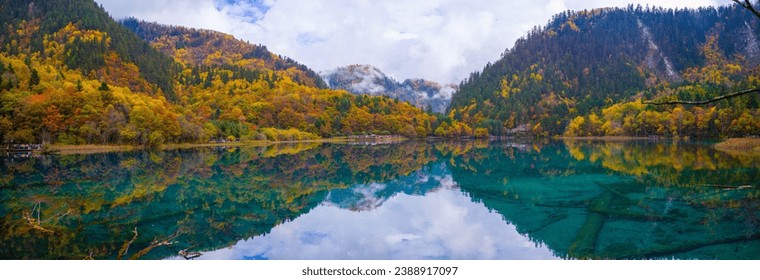
Longqiuzhuang Site.
Main Highlights: What You Absolutely Can’t Miss
Discover the Ancient Culture
Longqiuzhuang Site is a treasure trove of historical significance, dating back 7,000 to 5,000 years. As you explore the area, take a moment to appreciate the remnants of a primitive culture that thrived in the Yangtze and Huaihe River regions. This is where the Longqiuzhuang Culture was born, showcasing unique cultural features that are pivotal for understanding early Chinese civilization.
The Archaeological Excavation Area
One of the most exciting aspects of visiting Longqiuzhuang is witnessing the area where significant archaeological excavations took place. Four major digs have uncovered 402 tombs and over 2,000 cultural relics, including pottery, tools, and even ancient rice grains. Wander around this expansive site, imagining the lives of those who once inhabited it. Tip: Bring comfortable shoes for walking and a camera to capture the stunning vistas.
The Museum of Cultural Relics
Don’t miss the adjacent museum that houses many of the artifacts unearthed from the site. Here, you can see exquisite jade tools, pottery, and primitive artworks that tell a story of daily life and artistic expression from millennia ago. Tip: Check the museum’s schedule for guided tours that provide deeper insights into the relics and their historical context.
Carbonized Rice Discovery
One of the standout features of the Longqiuzhuang Site is the discovery of carbonized rice, an important find that contributes to the study of the origins of rice farming in China. This ancient grain not only signifies agricultural practices but also underlines the site’s importance in understanding early human diets and farming techniques. Tip: Take notes or ask questions during your visit to fully grasp the agricultural history behind this discovery.
Ancient Pottery Fragments
As you traverse the site, be on the lookout for ancient pottery fragments adorned with characters from antiquity. These relics provide invaluable insights into the early development of Chinese writing. Marvel at the craftsmanship and imagine the stories these small pieces of history could tell. Tip: Bring a magnifying glass to examine the intricate details of the pottery up close.
Scenic Surroundings
The Longqiuzhuang Site is nestled in the picturesque landscape of Gaoyou, making it an ideal spot for a leisurely stroll after your exploration. The peaceful surroundings allow for reflection on the rich history you’ve just uncovered. Tip: Pack a picnic to enjoy amidst the serene environment or find a local café nearby for a taste of regional cuisine.
Cultural Significance of the Site
Understanding the cultural significance of Longqiuzhuang is essential for appreciating its historical value. This site is recognized as one of the top ten archaeological discoveries in China, marking it as a pivotal location for understanding the evolution of ancient Chinese civilization. Tip: Take time to read the informational plaques around the site to enhance your understanding of its historical context.
Practical Information
Before you head out, keep in mind that the Longqiuzhuang Site is open from 5:30 AM to 12:00 AM daily. It’s advisable to visit earlier in the day to avoid crowds and to have ample time for exploration. Tip: Consider booking a local guide for a more immersive experience, as they can provide fascinating stories and insights that you might miss on your own.
Embark on a journey back in time at Longqiuzhuang Site—where ancient history comes alive and cultural heritage is celebrated.
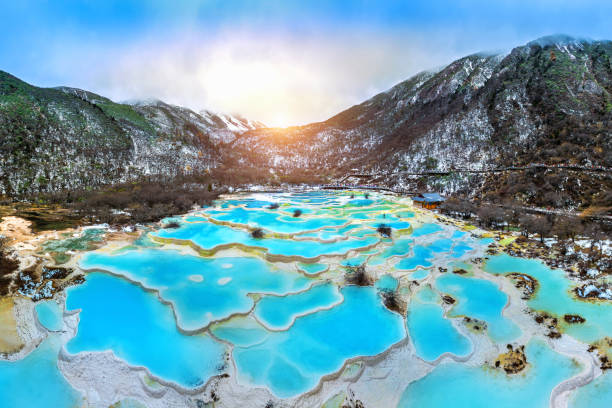
Longqiuzhuang Site.
Planning Your Visit: A Practical Guide
Best Time to Visit
The Longqiuzhuang Site is open year-round, but the best time to visit is during the spring (April to June) and autumn (September to November) months. During these periods, the weather is mild and pleasant, making it ideal for exploring the archaeological ruins and enjoying the surrounding landscapes. Summer can be hot, with temperatures soaring, while winter can be quite cold, so plan your visit accordingly.
Recommended Itinerary
To make the most of your visit, consider the following itinerary:
Morning
- Arrive Early: Start your day by arriving at the Longqiuzhuang Site when it opens at 5:30 AM. This allows you to enjoy the site with fewer crowds.
- Guided Tour: Spend 1-2 hours exploring the site. Consider joining a guided tour to gain insights into the significance of the archaeological findings, including the ancient pottery and carbonized rice.
Afternoon
- Lunch Break: After your morning exploration, head to a nearby restaurant for a taste of local cuisine. Options include Jingji Restaurant or XIAO QIN JIAO MIAN DIAN, both known for their authentic dishes.
- Visit Nearby Attractions: Consider visiting nearby points of interest such as East Lake Resort or other cultural landmarks in Gaoyou.
Evening
- Relax by the Lake: If time permits, enjoy a peaceful evening stroll around Gaoyou Lake before concluding your day.
Photography Tips
- Golden Hour: The early morning and late afternoon provide the best lighting for photography, enhancing the beauty of the ruins and surrounding landscape.
- Details Matter: Focus on capturing the intricate details of the artifacts and structures. Close-up shots of pottery and tools can tell fascinating stories.
- Wide Shots: Don’t forget to take wide-angle shots to capture the scale of the site and its natural surroundings.
What to Wear
- Comfortable Footwear: As you will be walking on uneven terrain, sturdy walking shoes or hiking boots are essential.
- Weather-Appropriate Clothing: Dress in layers to adapt to changing temperatures. Lightweight clothing is ideal for the summer, while warmer layers are recommended for winter visits.
- Sun Protection: Wear a hat and sunscreen to protect against the sun, especially during the summer months.
Insider Tips
-
Engage with Local Guides: Hiring a local guide can enrich your experience. They can provide valuable context and share lesser-known stories about the site.
-
Plan for Cultural Events: Check the local calendar for any cultural events or festivals occurring during your visit, as these can provide a deeper understanding of the region’s heritage.
-
Respect the Site: As a historical site, it’s important to respect the ruins. Avoid touching artifacts and stay on designated paths to help preserve this ancient cultural treasure.
-
Stay Hydrated: Carry water with you, especially in the warmer months, to stay hydrated while exploring.
-
Explore Beyond the Ruins: Take time to wander around Longqiuzhuang and discover its charming streets, local shops, and eateries that offer a taste of everyday life in Gaoyou.
With this practical guide, you’re well-equipped to enjoy your visit to the Longqiuzhuang Site, delve into its rich history, and create lasting memories of your journey.
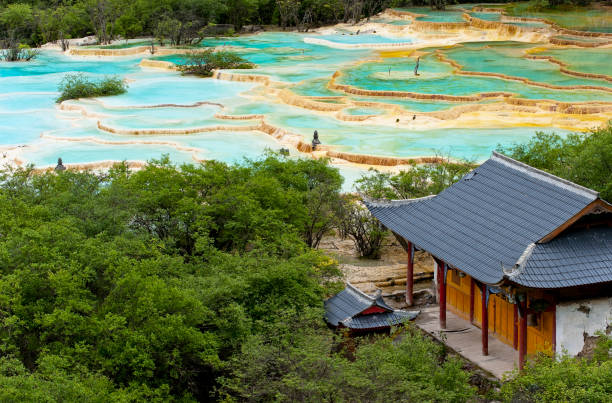
Longqiuzhuang Site.
Tickets: Prices, Booking, and Tips
When planning your visit to the Longqiuzhuang Site, it’s important to know about ticket options, pricing, and booking tips to ensure a smooth experience. Here’s all the information you need to make your visit memorable.
| Ticket Type | Price (CNY) | Includes |
|---|---|---|
| Adult Ticket | 40 | Access to the Longqiuzhuang Site |
| Child Ticket | 20 | Access for children aged 6-18 |
| Family Package | 100 | 2 Adults + 2 Children (ages 6-18) |
How to Book Your Tickets
Tickets for the Longqiuzhuang Site can be conveniently purchased on-site. However, to avoid long lines and ensure availability, it’s highly recommended to book your tickets in advance. You can do this through various online travel platforms or directly from local tourism websites that offer booking services.
Booking Tips:
– Plan Ahead: Since the site can attract many visitors, especially during weekends and holidays, securing your tickets at least a few days in advance is wise.
– Check for Promotions: Some travel websites might offer discounts or package deals that include local tours, so keep an eye out for those.
– Contact Information: If you have any questions or need assistance with your booking, you can call the site at +86-514-84477019 for ticket inquiries.
By preparing ahead of time and booking your tickets, you’ll be able to enjoy the rich history and archaeological significance of the Longqiuzhuang Site without any hassle. Happy travels!
How to Get There: A Complete Transportation Guide
Getting to Longqiuzhuang Site: Your Comprehensive Transportation Guide
Visiting the Longqiuzhuang Site, a treasure trove of ancient history in Gaoyou, Jiangsu Province, is a rewarding experience for travelers interested in Chinese culture and archaeology. Here’s how to reach this fascinating destination and explore the area.
From the Nearest Major City
Nanjing: A Gateway to Gaoyou
Nanjing, the capital of Jiangsu Province, is approximately 90 kilometers (56 miles) from the Longqiuzhuang Site, making it the nearest major city. There are several transportation options to get to Gaoyou:
By Train:
– Duration: About 1 hour
– Cost: Approximately CNY 30-50 (USD 4-7)
– Details: From Nanjing Railway Station, take a high-speed train to Gaoyou Railway Station. Trains run frequently throughout the day; check the schedule in advance for the most convenient timing.
By Bus:
– Duration: Around 1.5 to 2 hours
– Cost: Approximately CNY 40-60 (USD 6-9)
– Details: Buses depart from Nanjing’s Nanjing South Bus Station. It’s advisable to purchase tickets a day in advance, especially during peak travel seasons.
By Car:
– Duration: About 1.5 hours
– Cost: Varies due to fuel and tolls
– Details: Renting a car or hiring a taxi can provide flexibility. Take the G25 highway directly to Gaoyou. Be prepared for toll fees along the way.
Getting Around the Scenic Area
Once you’ve arrived at the Longqiuzhuang Site, getting around is fairly straightforward.
Walking:
– The site covers an area of over 40,000 square meters, and exploring it on foot is the most enjoyable way to absorb the rich history and natural beauty. Allocate about 1-2 hours for a thorough visit.
Local Transport:
– Taxis: Taxis are available in Gaoyou and can be hailed on the street or booked via local ride-hailing apps. A taxi ride from Gaoyou city center to the Longqiuzhuang Site should cost around CNY 20-30 (USD 3-5).
– Bicycles: Some local shops offer bicycle rentals, allowing travelers to explore the surrounding areas at a leisurely pace. Rental costs range from CNY 10-20 (USD 1.50-3) per hour.
Guided Tours:
– If you prefer a structured experience, consider booking a guided tour that includes transportation to the site. Many local agencies offer half-day or full-day tours from nearby cities, which often include additional historical attractions.
Additional Tips
- Opening Hours: The Longqiuzhuang Site is open from 5:30 AM to 12:00 AM, allowing for flexibility in planning your visit.
- Language: While many locals understand basic English, having a translation app or basic Mandarin phrases can enhance your experience.
- Weather Considerations: Check the weather forecast before your visit, as Jiangsu Province can have varying weather patterns throughout the year.
By following this guide, you’ll be well-equipped to navigate your journey to the Longqiuzhuang Site and enjoy a captivating glimpse into ancient Chinese civilization. Safe travels!
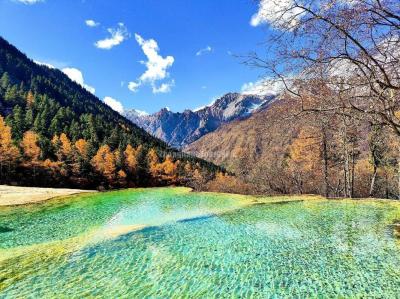
Longqiuzhuang Site.
Local Cuisine and Accommodation Nearby
When visiting the Longqiuzhuang Site, immersing yourself in local culinary delights and finding the right place to stay can greatly enhance your travel experience. Here’s a guide to the must-try dishes and accommodation options nearby.
Savor the Local Flavors
-
Yangzhou Fried Rice (扬州炒饭)
A quintessential dish from the region, Yangzhou Fried Rice is a vibrant mix of rice, vegetables, and proteins like shrimp or pork, flavored with soy sauce. Each bite offers a delightful crunch, making it a favorite among locals and travelers alike. -
Steamed Buns (包子)
These fluffy, steamed buns can be found at many eateries around Gaoyou. Typically filled with a savory mixture of minced pork, vegetables, or even sweet red bean paste, they’re perfect for a quick snack as you explore the area. -
Stir-Fried River Shrimp (炒虾仁)
Fresh river shrimp are lightly stir-fried with seasonal vegetables and a splash of soy sauce, highlighting the natural sweetness of the shrimp. This dish is a fantastic representation of Jiangsu’s culinary prowess and is often served in local restaurants. -
Jiangsu Braised Duck (江苏红烧鸭)
This rich and flavorful dish showcases duck braised to perfection in a savory sauce made from soy sauce, sugar, and spices. The tender meat and aromatic sauce are a must-try for any foodie visiting the region.
Stay Close to Culture and Comfort
-
Luxury Option: Yangzhou Marriott Hotel
Located about a 30-minute drive from Longqiuzhuang, the Yangzhou Marriott offers modern amenities, spacious rooms, and exquisite dining options. Enjoy a relaxing stay with spa services and a beautiful view of the city, making it perfect for travelers seeking comfort and style. -
Boutique Choice: The Garden Hotel
Nestled in the heart of Gaoyou, The Garden Hotel provides a unique blend of traditional charm and modern convenience. With beautifully decorated rooms and personalized service, this boutique hotel gives guests an intimate atmosphere, ideal for unwinding after a day of exploration. -
Budget-Friendly: GreenTree Inn
For budget-conscious travelers, the GreenTree Inn offers clean and comfortable accommodations without breaking the bank. Located conveniently close to the Longqiuzhuang Site, it’s a practical choice for those looking to maximize their adventures while keeping costs low.
With these local flavors and accommodation options, your visit to the Longqiuzhuang Site will not only be enriching but also deliciously memorable. Enjoy your journey through history and culture in this fascinating part of China!
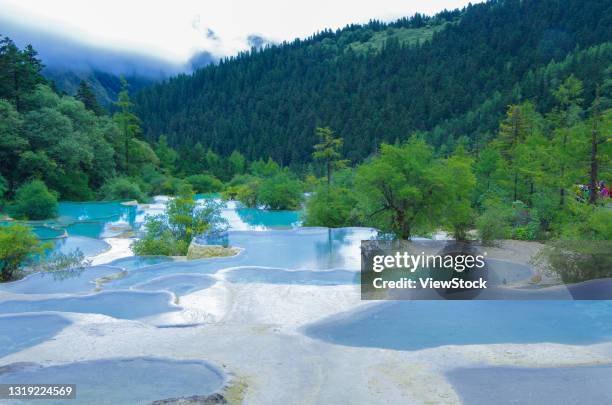
Longqiuzhuang Site.
Frequently Asked Questions
-
Is Longqiuzhuang Site suitable for children and the elderly?
Yes, Longqiuzhuang Site is generally suitable for families with children and elderly visitors. The site features well-maintained pathways and areas to explore, making it accessible for most mobility levels. However, it is always advisable to supervise young children and ensure elderly visitors are comfortable with the walking distances. -
Are there English signs and guides available at the site?
While there may be some English signage around the Longqiuzhuang Site, detailed information might primarily be in Chinese. Visitors interested in a more comprehensive understanding of the site’s history and significance should consider hiring a local guide who can provide insights in English. -
How much time should I allocate for visiting Longqiuzhuang Site?
A visit to Longqiuzhuang Site typically requires about 1 to 2 hours. This timeframe allows you to explore the main attractions, take photos, and appreciate the rich history of the area. If you wish to delve deeper into the archaeological significance and enjoy the surrounding landscape, consider extending your visit. -
What are the opening hours of Longqiuzhuang Site?
Longqiuzhuang Site is open daily from 5:30 AM to 12:00 AM (midnight). This extensive schedule provides visitors with flexibility to plan their visit at their convenience, whether you prefer an early morning or a later evening exploration. -
Is there an admission fee to enter Longqiuzhuang Site?
Yes, there is typically an admission fee to access the Longqiuzhuang Site. For the most accurate and up-to-date information regarding ticket prices, it is recommended to check with local resources or the official site before your visit. -
What facilities are available at Longqiuzhuang Site?
The site generally offers basic visitor facilities, such as restrooms and information points. However, amenities like food and beverage options may be limited within the site itself. It’s advisable to bring water and snacks if you plan to spend a significant amount of time there. -
How do I get to Longqiuzhuang Site?
Longqiuzhuang Site is located in Longqiu Town, Gaoyou, Jiangsu Province. Visitors can reach the site by public transport or taxi from nearby cities like Yangzhou or Nanjing. If you are driving, parking availability should be checked ahead of your trip. -
Are there any nearby attractions worth visiting?
Yes, there are several attractions near Longqiuzhuang Site, including the beautiful East Lake Resort and various local markets. If you have extra time, consider exploring these nearby sites to enhance your cultural experience in the area.
Final Thoughts on Your Trip
Visiting the Longqiuzhuang Site is not just a journey through time; it’s an encounter with the very roots of Chinese civilization. As you stroll through the remnants of this ancient culture, dating back 7,000 to 5,000 years, you step into a world that tells the story of humanity’s early agricultural practices and artistic expressions. The unearthed relics—from pottery and tools to the delicate remnants of carbonized rice—offer a tangible connection to our ancestors and their way of life.
The site stands as a testament to the rich tapestry of history woven through the Yangtze River Basin, a place where cultural development flourished alongside the natural landscape. Whether you’re an archaeology enthusiast, a history buff, or simply a curious traveler, the Longqiuzhuang Site invites you to reflect on the enduring legacy of human creativity and resilience.
As you conclude your visit, carry with you the understanding that every ancient site holds stories waiting to be uncovered. Let the echoes of the past inspire your future adventures, reminding you that history is not just behind us; it’s intertwined with who we are today. So, venture forth with an open heart and a curious mind, ready to explore the countless wonders that await you on your travels.